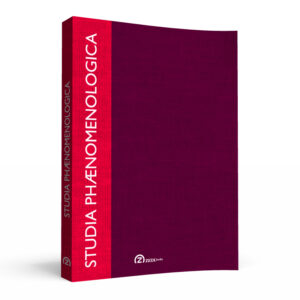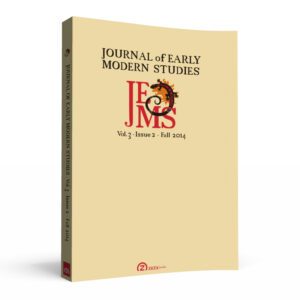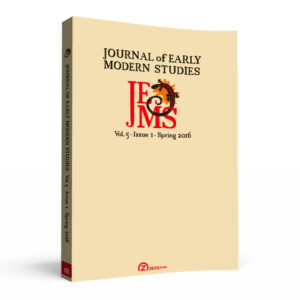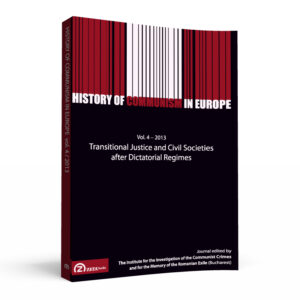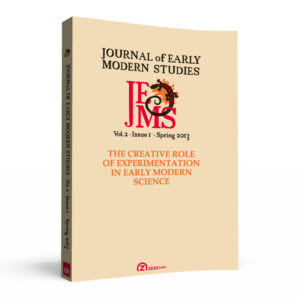TRANSLATING HEIDEGGER’S SEIN UND ZEIT
- Cristian Ciocan: Translating Heidegger’s Sein und Zeit: Introduction [OPEN ACCESS]
- A Timeline of Sein und Zeit
- Corrado Badocco: German Editions of Heidegger’s Sein und Zeit
- Heidegger and Translation: A Bibliography
ARTICLES
Dimiter Georgiev Saschew: Rezeptionsgeschichte ohne Ende: Heideggers Werk Sein und Zeit auf Bulgarisch
Abstract: The following paper discusses from the point of view of the translator the obstacles, both institutional and linguistic, encountered during the introduction of Heidegger’s book Being and Time in the Bulgarian socio-cultural context. In particular, some basic terms, which compose the core of Heidegger’s book, have been thoroughly analyzed. These include terms and categories such as Dasein, Geschichte / Historie, Zeitigkeit / Zeitlichkeit, Gegenwart / Gegen-wart, Zukunft / Zukommen, Gewärtigen, Vergangenheit, Man / Manselbst, Bewandtnis, and others. Concrete arguments have been given in order to prove that direct borrowing of some of those terms, existing in translations from Russian and other languages, is not feasible.
Ivan Chvatík: Wie es eigentlich gewesen ist: Über Ursprung und Methode der tschechischen Übersetzung von Sein und Zeit
Abstract: The following article presents how the first Czech phenomenologist Jan Patoèka became a student of Edmund Husserl and how he motivated in the 70s a small group of Czech phenomenologists to begin the translation of Sein und Zeit, which started after his death in 1977. The article then describes how this translation was secretly “published” in the 80s, under the circumstances of the communist totalitarian regime, as successive installments. It then discusses examples of how the linguistic translation difficulties were solved and how the entire book was finally and officially published in the middle of the 90s.
Mark Wildschut: Heidegger into D(e)ut(s)ch
Abstract: In this contribution, the author sketches his main motives for translating Sein und Zeit into Dutch. First, the author argues that Heidegger’s text – and its translation – can clarify its notions better than most of Heidegger’s interprets can do. Then, the author shows that Heidegger’s method, being hermeneutics, has intrinsically to do with translation. Referring to the genesis of his translation, the author points at some general peculiarities of Heidegger’s use of language, insisting upon their meaning for the translation of Heidegger’s work into Dutch.
John Macquarrie: Heidegger’s language and the problems of translation
Abstract: The article tells the detailed story of the first translation of Sein und Zeit in English, i.e. the way a Scottish pastor and an American scholar joined their efforts to find a suitable path of breaking the “myth of untranslatability” which surrounded at the time Sein und Zeit. The story also covers their method of translation, the obstacles they encountered, while covering in depth the different types of “linguistic oddities” of the Heideggerian idiom which often puzzles the translators: new or compound words, etymologies, grouping words in “constellations” which stem from the same root.
Joan Stambaugh: Attempting to translate Being and Time
Abstract: In this article, the author narrates the story of the second English translation of Being and Time. In the first part, the author describes both the personal history and the general cultural situation which led to the necessity of a new translation of Sein und Zeit. In the second part of the essay, the author discusses some of the Heideggerian terms as Da-sein, Wiederholung, Verfallen, Geworfenheit, Befindlichkeit, focusing on the meaning and the central role of temporality in the project of existential analytic.
Reijo Kupiainen: Finnish approaches to Sein und Zeit
Abstract: Finnish is a small language area and classical philosophical translations have been largely missing. Translating Sein und Zeit brings forth some specific difficulties. Finnish philosophical tradition is mostly analytical and we don’t have established phenomenological concepts. For example, the word “Dasein” is translated in several different ways. Following Heidegger’s own method and philosophy of language a translator has to find his own path situated in the nearness of Being and language. Therefore a translation is always an act of rewriting. Heidegger’s own roots in philosophical traditions of Neo-Kantianism, Aristotle and primal Christian thought must be taken into account as well.
Rudolf Boehm: L’être et le temps d’une traduction
Abstract: In this article, the author explains the context and circumstances in which he has begun, back in the 60s, the first French translation of Sein und Zeit, in collaboration with Alphonse de Waehlens. The article describes the methods and perspectives the first French translators adopted during their work of translation. The article ends with a few considerations concerning the incompleteness of the Heideggerian project of Sein und Zeit, explaining this nonachievement by Heidegger’s abandonment of the existential perspective he assumed in Sein und Zeit.
François Vezin: Vingt ans après: Philosophie et pédagogie de la traduction
Abstract: At the beginning of this article, the author discusses the biographical context of his engagement in the French translation of Sein und Zeit in the 1980s, under the guidance of Jean Beaufret. He integrates the discussion into the general problem of philosophical translation. The author argues that one of the most important things in this matter is the decision of translating. Concerning Heidegger translations, the author – answering to some critics he received – insists upon the idea of the intimate relationship between thinking and poetry, justifying his constant appeal to examples from literature in his translator’s notes at the end of his version of Sein und Zeit.
Johann Tzavaras: Heideggers Hauptwerk in Neugriechisch
Abstract: In this paper, I try to underline both the positive and negative circumstances in which I began translating Heidegger’s Sein und Zeit in Greek. In 1971 I started, as a young student of philosophy, to study and translate this book, although I misunderstood it and considered it a paradigm of “existentiale”, not existential philosophy. I benefited essentially from both the English and the French translations and I’ve also received great help from my Greek mentor, E. N. Platis. I published my translation in two volumes, one in 1978 and the other in 1985 and the critics have been very positive. In the beginning, I gave extended explanations about the translation problems and my solutions in a paper published in 1974. In the following years, I wrote articles about the Heideggerian concepts, in order to facilitate a better understanding of his philosophy.
Mihály Vajda: Die Geschichte eines Abenteuers: Sein und Zeit auf Ungarisch
Abstract: The author, as the leader of the team that translated Heidegger’s Sein und Zeit into Hungarian, tells the story of the translation. The members of this team were anything else but experts in Heidegger. Belonging to the so-called “democratic opposition” at the beginning of the ‘80s, they asked the author, a dissent himself, to hold for them a private seminar on modern phenomenology. It is here where they read Husserl, Scheler, and wanted to read Heidegger as well. Their German, however, was not good enough to understand Being and Time in the original. That’s why they decided to translate it into Hungarian. In a few years, the translation was ready – three years ago, in 2001, it was even published its second, revised edition. In the second part of this short essay, the author deals with those Heideggerian words that have proven to present the most serious difficulties at that time, and explains the nature of their difficulties in some cases: Sein, Seiendes, Dasein, Da, Bewandtnis, Zuhanden, Vorhanden, das Man, Befindlichkeit, Angst, Eigentlichkeit, Unheimlichkeit, Platz, Ort.
Alfredo Marini: La nouvelle traduction italienne d’Être et temps
Abstract: The author explains in a summary way a series of aspects which point to the need, now as well as 18 years ago, of a new Italian translation of Sein und Zeit. Besides the new interpretative perspective coming from the publication of Heidegger’s Freiburg and Marburg lectures, the inaccuracies of the first Italian translation (in both editions: of 1953 and 1970; the third edition 2005 maintains the original terminology of P. Chiodi) can be resumed to the following: 1. the translation stands upon an Existentialist interpretation of the existential analytic and does not comprehend that the Heideggerian meditation of die Frage nach dem Sinn vom Sein als solchen should be understood in a radically positive direction. 2. It shows an insufficient knowledge of Dilthey and Husserl, both playing an essential role in Heidegger’s philosophical project. 3. It does not take into account that the real object of Heidegger’s meditation in Sein und Zeit is the Vorfrage des Seins and the language of metaphysics; therefore it does not acknowledge the systematic character of his terminology and makes difficult the understanding of Heidegger’s Wende (which the first translation confounds with the Kehre of the Seinsfrage).
Jiro Watanabe: Aus meiner Erfahrung der japanischen Übersetzung von Sein und Zeit
Abstract: I have first translated Sein und Zeit in Japanese in 1971 in collaboration with my elder colleague Prof. Hara in Tokyo. But in 1976 both he and Martin Heidegger died, and in 1977 a new edition of Sein und Zeit was published as part of Heidegger’s complete works. This new edition included many marginal notes of Heidegger’s and many textual revisions made by Heidegger himself. Therefore, I have published in 2003, based on the old version of my Japanese translation, a totally revised Japanese translation of Sein und Zeit, in which, as translator, I have written a new introduction, many explicatory notes about Heidegger’s marginal notes and textual modifications and a chronological detailed record of Heidegger’s career. Out of this experience, I would like to detail upon two aspects: first, any nowadays reader of this work must study not only the original text itself, but also, by all means, Heidegger’s marginal notes, in order to correctly grasp a development of his thought on Being. Secondary, a reader must especially pay attention to the difficult problem of the relationship between authenticity and inauthenticity of the Being-in-the-world, because here is the most basic problem of the existence of Dasein and it is here the place where the turning point in Heidegger’s later thought on Being has its origin.
Ryosuke Ohashi: Heidegger ins Japanische übersetzen
Abstract: In this article, the author begins by noticing a statistical fact: from the seven Japanese translations of Being and Time, in five cases the German word Sein has been translated as sonzai, and in two cases as u. This fact invites the author to a discussion about the Japanese understanding of “Being”, which is developed on three levels: the question of language, the question of historical-cultural world, and the question of the “European”, understood as a Western principle, depictingthis “Abend-land” as a region threatened by night.
Kwang-Hie Soh: The difficulties of translating Heidegger’s terminology into Korean
Abstract: In this contribution, I sketch the historical context in which the first Korean translation of Sein und Zeit started and the difficulties faced during the process of translation. The translation took about ten years. It is quite difficult to understand Heidegger’s terms and more difficult to translate them into Korean because they have multiple meanings and nuances. So I translated those terms as literally as I could, but sometimes I had to take liberties. When needed, I explained the literal meaning and the usage of the terms in the footnotes.
Ki-Sang Lee: The “Happening of Being” and the Horizon of Being. Enowning of the Understanding of Being in Korea
Abstract: I have spent 20 years preparing for the translation of Heidegger’s Being and Time. In these 20 years, I spent 10 years in Germany writing the master and doctoral thesis on Heidegger in order to understand Heidegger’s thoughts properly. Later on I spent other 10 years teaching Heidegger’s philosophy at university while translating Being and Time into Korean. At that time, there were already 4 different translations of Being and Time in Korean. But because these translations were based on Japanese translations, many concepts and terms were ungraspable by ordinary Korean people. Impressed with Heidegger’s use of the ordinary words as important philosophical concepts, I also did my best to translate Being and Time using ordinary Korean words.
Marcia Sá Cavalcante Schuback: Die Gabe und Aufgabe des Währenden
Abstract: The present text discusses the problems concerning the translation and the non- translation of the thinking word Dasein in Sein und Zeit. Assuming that for Heidegger Dasein is transcendence and this as an in-finitive trans-lation from a substantive and substantial meaning of being to a verbal one, it becomes necessary to translate the word Dasein in Sein und Zeit above all within the German language itself. The task of translating the thinking word Dasein is therefore the one of making possible the work of thought in which the destruction of the substantialistic meaning of being can take place always anew. Showing the verbal temporality of the thinking word Dasein as the internal and aspectual temporality of a Währenden, the article explains the translating choices made in my translation of Sein und Zeit into Portuguese.
Cătălin Cioabă: Über die Wahrheit und Richtigkeit einer philosophischen Übersetzung: Der Terminus „Bewandtnis“ in Sein und Zeit
Abstract: The article starts off with some meditations on the question of the much-debated “non-translatibility of German philosophy”, which, in the particular case of Martin Heidegger, proves to be even more acute. Nevertheless, the conclusion of these thoughts is that, on the contrary, a translation of a philosophical text is meant finally not only to mediate between two languages, but also to be for itself a necessary step in a more profound understanding of an original text. Following this logic, the article presents in details the decisions taken by the Romanian translators in rendering the concept most difficult to translate from Being and Time: Bewandtnis.
Dean Komel: Sprache der Philosophie zwischen Tradition und Übersetzung
Abstract: The philosophical translation should be considered as a special usage of language. The author reflects upon the spiritual, historical and intercultural roles of translation and its significance for the philosophical experience of Slovenian language, a very important one in the case of translating Being and Time. The problem is how to turn this hermeneutic experience into a concrete translation.
Andrina Tonkli-Komel: Husserl in Sein und Zeit: Zur Umdeutung der phänomenologischen Terminologie in Sein und Zeit
Abstract: The translation of Being and Time is in different ways connected with the understanding of Heidegger’s hermeneutical destruction of the basic philosophic concepts. The translator of Being and Time is further faced with complex theoretical questions, such as the relation between Husserl’s transcendental phenomenology and Heidegger’s hermeneutical phenomenology. The article aims to recognize the importance of Husserl’s phenomenological investigations for the genesis of several central concepts in Being in Time.
Jorge Eduardo Rivera: Translating Being and Time Into Spanish
Abstract: This article discusses what could be called “the adventure of translating” Sein und Zeit in Spanish. It argues that every translation is an adventure, and particularly the translation of a philosophical text. A translation does not literally reproduce into another language what an author or philosopher affirms. The question is instead to express it in the most accurate form with the resources of the translator’s language, in such a way that the text may sound as if it was written in the language to which it is to be translated. This article refers to the very long route that the author had to go over in order to make Sein und Zeit “speak” a good and clear Spanish.
Richard Matz: Some words about my way to Heidegger
Abstract: These pages belong to the Swedish translator of Sein und Zeit, Richard Matz, who unfortunately died september 1992. The text is taken from the correspondence between Richard Matz and the Portuguese translator of Sein und Zeit, Marcia Sá Cavalcante Schuback, who translated it from Swedish and explained in a final note the context in which they met and discussed about Heidegger translations, invoking also the figure and personality of Richard Matz.
Kaan H. Ökten: „Sein“ ist nicht gleich „Sein“.: Translating Sein und Zeit into Turkish
Abstract: The Turkish translation of Sein und Zeit has not yet been completed. Therefore it is not the subject of this paper whether or not Heidegger’s opus magnum can possibly be übersetzt, übertragen, or deutend dargestellt in an entirely different language such as Turkish. What is going to be discussed, instead, are the ways in which Heidegger can be presented by using the authentic capabilities of Turkish; the different alternatives of such a presentation; the notions and contexts that those alternatives would materialize in the mind of a person who speaks and thinks in Turkish; and, finally, the extent to which those materialized concepts match the objectives that Heidegger had in mind. It is interesting, for that reason, that, for example, varlik does not always mean varlik in Turkish, while Sein always does mean Sein in German.
HEIDEGGER TRANSLATIONS IN THE LAST DECADE
Theodore Kisiel: Review and Overview of Recent Heidegger Translations and Their German Originals: A Grassroots Archival Perspective
Abstract: This survey seeks to define the present situation and climate for translating Heidegger into English after the disastrous translation (1999) of the Beiträge, Heidegger’s second magnum opus after Sein und Zeit. The 12 translations that have appeared since then tend to handle Heidegger’s neologisms in less ludicrous ways and continue to find ways to bend the highly restrictive rules imposed on translations by Heidegger’s literary executor. There are still errors of omission and commission in the German originals that carry over into the translations. A few of the English translators add to the errors of omission and commission but most tend to be competent and conscientious, producing excellent results. Yet even the best translators slack off in their production of the permitted glossaries, which are indispensable for demarcating Heidegger’s terminology in the time period involved and provide the reader a starting basis for an index, which is prohibited.
Tere Vadén: Probing for Indo-European connections: Heidegger translations in Finnish
Abstract: The Finnish Heidegger translations point to a problem created by the history of the language: words having to do with technology, metaphysics and so on are mostly direct loans from Indo-European languages with little connection to the rest of the vocabulary. This presents the translators with a dilemma: if one wants to retain Heidegger’s poetic and etymologising style, the Finnish tends to miss the essential contact to Greek-German-Western origins.
ARTICLES
Christian Sommer: Traduire la lingua heideggeriana: Remarque sur la traduction selon Heidegger, suivie d’une note sur la situation de la traduction de Heidegger en France depuis 1985
Abstract: This contribution discusses the problem of translating Heidegger. Heidegger’s „reiterative destruction“, the core of his phenomenological method in the 20s, is operating as an over-interpretative translation of a traditional text to reveal what is unwritten and unsaid in it. What does it mean, therefore, to translate Heidegger, i.e. to translate a translation? In the second part we briefly present a survey of French translations from Heidegger’s works in the last twenty years and discuss the problematic editorial situation in France.
Nicola Curcio: „Dasselbe ist niemals das Gleiche“: Heidegger auf Italienisch und die Debatte im letzten Jahrzehnt (1995-2005)
Abstract: There are two main tendencies regarding the recent Italian translations from Heidegger: on the one hand there is a tendency of making his thought comprehensible to the Italian public by any means; on the other hand there is the determination to render the text so faithfully as to risk stretching the limits of the Italian language – and having to resort to references to the glossary, as is the case of the latest translation of Holzwege. The admirable thinking efforts that also laybehind the attempts in the latter tendency can be better supported by hypertextual electronic publishing.
Laura Tuşa-Ilea: Heideggers Übersetzung ins Rumänische: ein Überblick
Abstract: In the past 20 years, 7 Romanian translations from Heidegger’s Complete Works have been published. They can be grouped in 3 phases: 1. the introductory phase (The Origin of the Work of Art, Path marks, Introduction to Metaphysics), creating a horizon for Heidegger’s thinking, almost unknown to the Romanian audience beforehand; 2) the etymological phase (Parmenide), trying to revive the Romanian linguistic and philosophical equivalences: 3) and the technical-systematic phase (Being and Time, Concept of Time, History of the Concept of Time. Prolegomena), creating a mature Romanian phenomenological language.
REVIEW ARTICLES
Larisa Cercel: Hermeneutik des Übersetzens: Heidegger, Gadamer und die Translationswissenschaft
Abstract: This article attempts to start an interdisciplinary dialogue, dealing with the different approaches on translation coming from philosophy and translation studies. The article argues that, despite many efforts of describing the phenomenon of translation from the point of view of linguistics, theory of literature and communication sciences, it is only the hermeneutical perspective that is able to interpret this phenomenon starting from itself and thus to reach to a comprehensive understanding of it. Hermeneutical reflections on translating came both from the hermeneutic philosophy (F. E. D. Schleiermacher, M. Heidegger, H.-G. Gadamer, P. Ricoeur) and from the translation studies (F. Paepcke, R. Stolze in Germany, H. Meschonnic, A. Bermann and J.-R. Ladmiralin France, G. Steiner in the Anglo-American area). However these two orientations have not, so far, entered into a dialogue. It is only these latest three books discussed in the present article that offer the premises of bringing closer the two hermeneutical traditions which developed so far in a parallel fashion, thus setting a starting point for discussing upon a general hermeneutical “theory” of translation.
Gabriel Cercel: Der frühe Philosophiebegriff Martin Heideggers im Lichte neuerer Dokumente und Interpretationen
Abstract: The last decades brought along an increasing historical approach to Heidegger’s thinking in the form of biographical research and ideological critique, also philosophical historiography and history of concepts. A consequence of this process is the rediscovery of the young Heidegger, following a long period of considering Heidegger the author of a single book and many other attempts at revising its approach. The present article identifies first the two general tendencies of research. 1. The shift of the interest from the canonical texts to minor texts and historical documents. 2. The temporal regress, first to the Marburg courses, then to the Freiburg lectures and the Habilitationsschrift. The books discussed by the article shed light on the latest step of this process, that of the growing shift of interest towards Heidegger’s formation years: the religious background in Meßkirch and his studies of theology, philosophy, mathematics, and natural sciences in Freiburg.
ISBN: 973-50-1142-5


